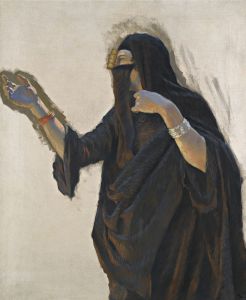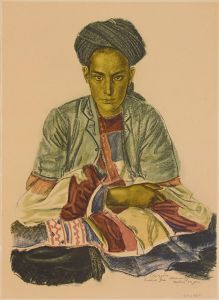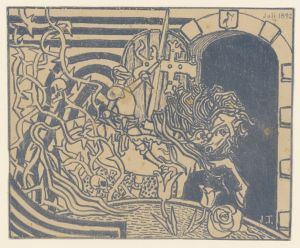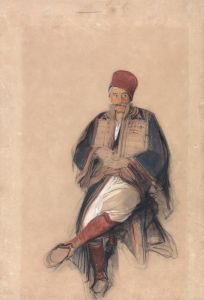
The Sentinel
A hand-painted replica of Ludwig Deutsch’s masterpiece The Sentinel, meticulously crafted by professional artists to capture the true essence of the original. Each piece is created with museum-quality canvas and rare mineral pigments, carefully painted by experienced artists with delicate brushstrokes and rich, layered colors to perfectly recreate the texture of the original artwork. Unlike machine-printed reproductions, this hand-painted version brings the painting to life, infused with the artist’s emotions and skill in every stroke. Whether for personal collection or home decoration, it instantly elevates the artistic atmosphere of any space.
Ludwig Deutsch (1855–1935) was an Austrian painter known for his Orientalist works, which vividly depicted scenes from the Middle East and North Africa. One of his notable paintings is "The Sentinel," a work that exemplifies his meticulous attention to detail and his fascination with the exoticism of the Orient, as perceived by Western artists of his time.
"The Sentinel" is a striking example of Deutsch's ability to capture the essence of a scene with remarkable precision and vibrant colors. The painting typically features a solitary guard, often depicted in a richly adorned uniform, standing vigilantly at his post. The setting is usually an architectural marvel, with intricate designs and patterns that reflect the Islamic art and architecture that Deutsch encountered during his travels. The sentinel, as the focal point of the painting, is portrayed with a sense of stoic dignity and alertness, embodying the themes of duty and vigilance.
Deutsch's work is characterized by his use of bright, vivid colors and his attention to the textures and materials of the clothing and surroundings. The fabrics in "The Sentinel" are often depicted with a high degree of realism, showcasing the luxurious silks and intricate embroidery that were common in the attire of the region's elite. The background typically includes elements such as ornate tiles, carved woodwork, and other architectural details that highlight the cultural richness of the setting.
Ludwig Deutsch was part of a broader movement of Orientalism in 19th-century European art, where artists sought to depict the cultures and landscapes of the Middle East and North Africa. This movement was fueled by a fascination with the exotic and the unknown, often romanticizing and idealizing the subjects. Deutsch, like many of his contemporaries, traveled extensively to gather inspiration and firsthand experience, which he then translated into his art with a high degree of accuracy and respect for the subject matter.
"The Sentinel" reflects Deutsch's commitment to authenticity and his skill in rendering scenes with photographic precision. His works are often praised for their ability to transport viewers to a different time and place, offering a glimpse into a world that was both foreign and fascinating to Western audiences of the time. Deutsch's paintings, including "The Sentinel," are held in high regard for their artistic merit and their contribution to the Orientalist genre.
Today, Ludwig Deutsch's paintings are appreciated for their historical significance and their artistic beauty. They serve as a window into the past, providing insight into the cultural exchanges and perceptions of the 19th century. "The Sentinel," like many of Deutsch's works, continues to captivate audiences with its detailed portrayal of a world that was once distant and mysterious to European eyes.


















